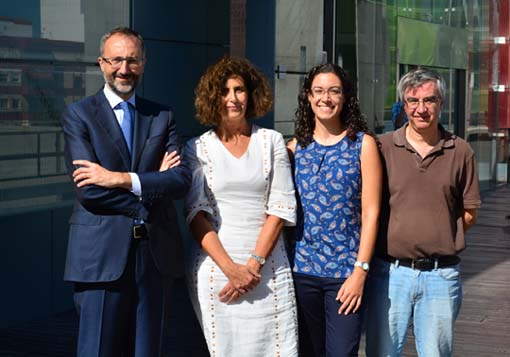A new method allows to predict the result of the resynchronization therapy in patients affected by heart failure.
- Press Office
- November 13rd, 2017

Researchers of the Universitat de València, Universitat Politècnica de València and La Fe hospital have developed a new method that allows to improve the selection of patients with heart failure that have to undergone Cardiac Resynchronisation Therapy (CRT). The presented methods would help to early predict the result of this intervention and optimise decision making.
The CRT is applied to improve heart function in patients who persist with symptoms despite undergoing a suitable pharmacological treatment and also present dyssynchrony criteria in the electrocardiogram. The therapy consists of implanting a special pacemaker in patients. It is an spread therapy, although, currently, one in three patients who undergo it do not respond in a positive way, despite meeting the necessary clinical standards.
There is a clinical need to improve the selection of patients and avoid interventions which do not give results. And this is where our work is framed, "explains Nuria Ortigosa, a researcher at the Institute of Pure and Applied Mathematics (IUMPA) of the UPV.
From the Department of Mathematical Analysis of the Universitat de València, the IUMPA-UPV, and the Cardiology Service of the La Fe hospital have carried out a retrospective study using a new electrical marker -obtained from different values extracted from the spectral analysis of the electrocardiogram- with the objective of measuring its energy before performing the intervention.
"This marker is significantly higher in those patients who will subsequently respond to CRT compared to those who will not present a positive response to CRT, being particularly greater in those with ischemic cardiomyopathy and/or with left bundle branch block," said the research team.
Thus, the new research team is able to identify, prior to the intervention, those patients who will respond positively to therapy. The obtained results improve the accuracy and sensitivity a 20% with regard to the most used clinical standard to select patients for the intervention.
“Our work aims to facilitate clinical practice, with the purpose of reducing the rate of patients who undergo CRT and eventually do not respond to treatment by using a simple and widely available non-invasive technique, such as the surface electrocardiogram", the researchers add.
The study developed by researchers of UV, UPV and La Fe Hospital has been published in the journal “‘Medical & Biological Engineering & Computing”.
Reference
Ortigosa, N., Pérez-Roselló V., Donoso, V., Osca, J., Martínez-Dolz, L., Fernández, C. & Galbis, A. “Early prediction of cardiac resynchronization therapy response by non-invasive electrocardiogram markers.” Medical & Biological Engineering & Computing 2017. DOI 10.1007/s11517-017-1711-1
File in: Investigació a la UV
















